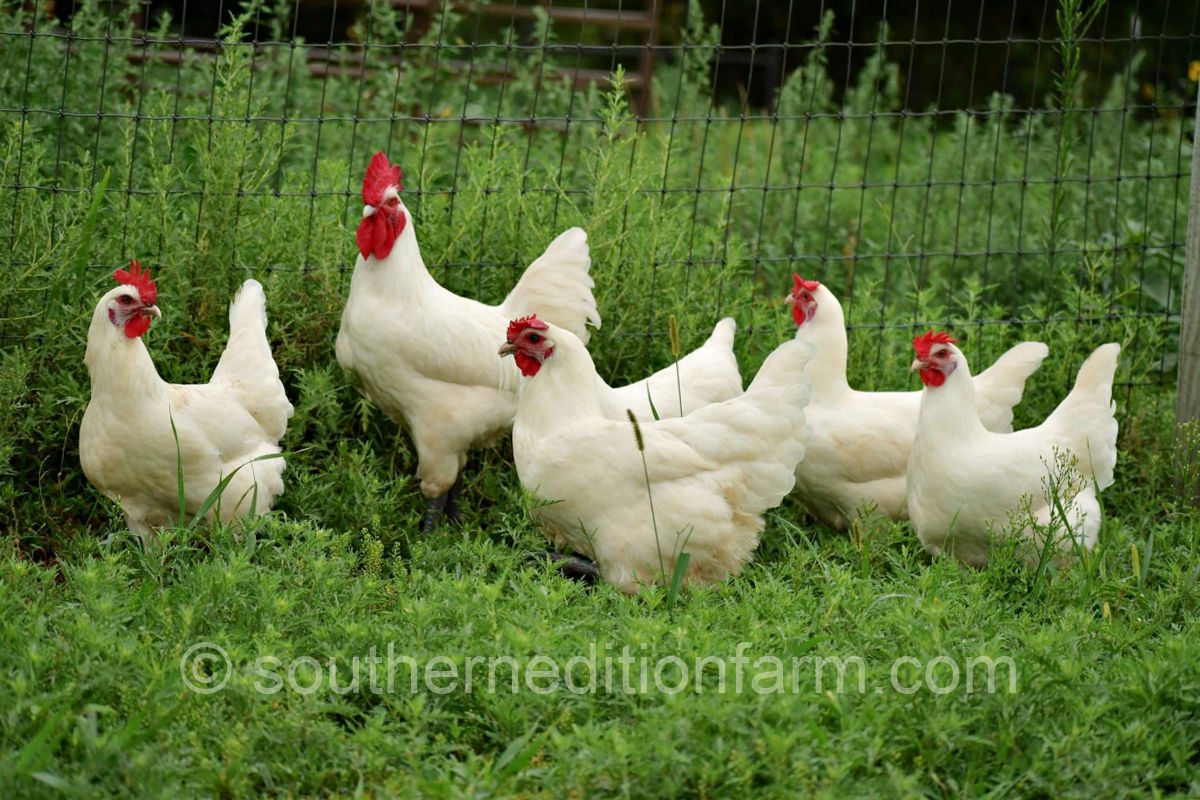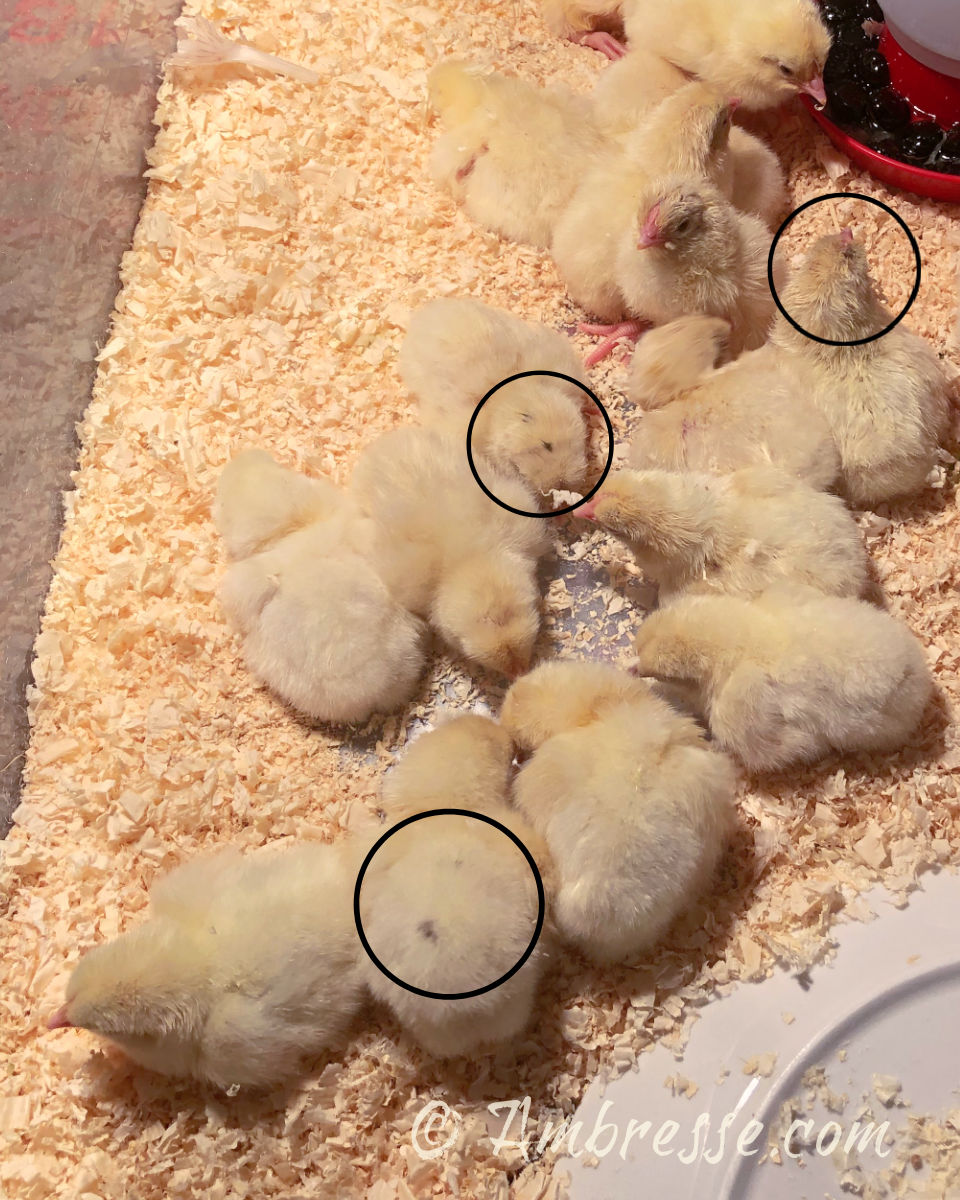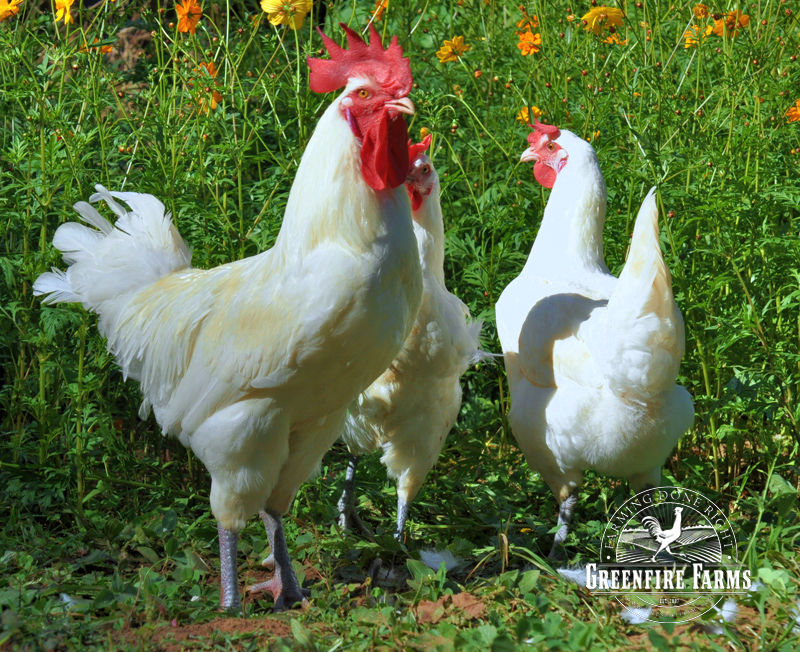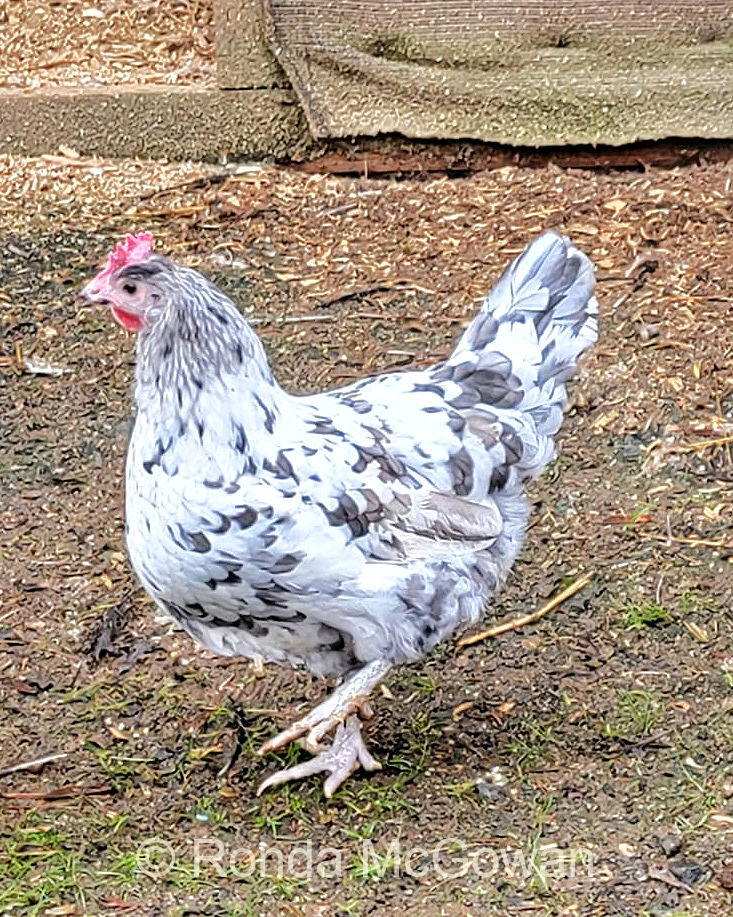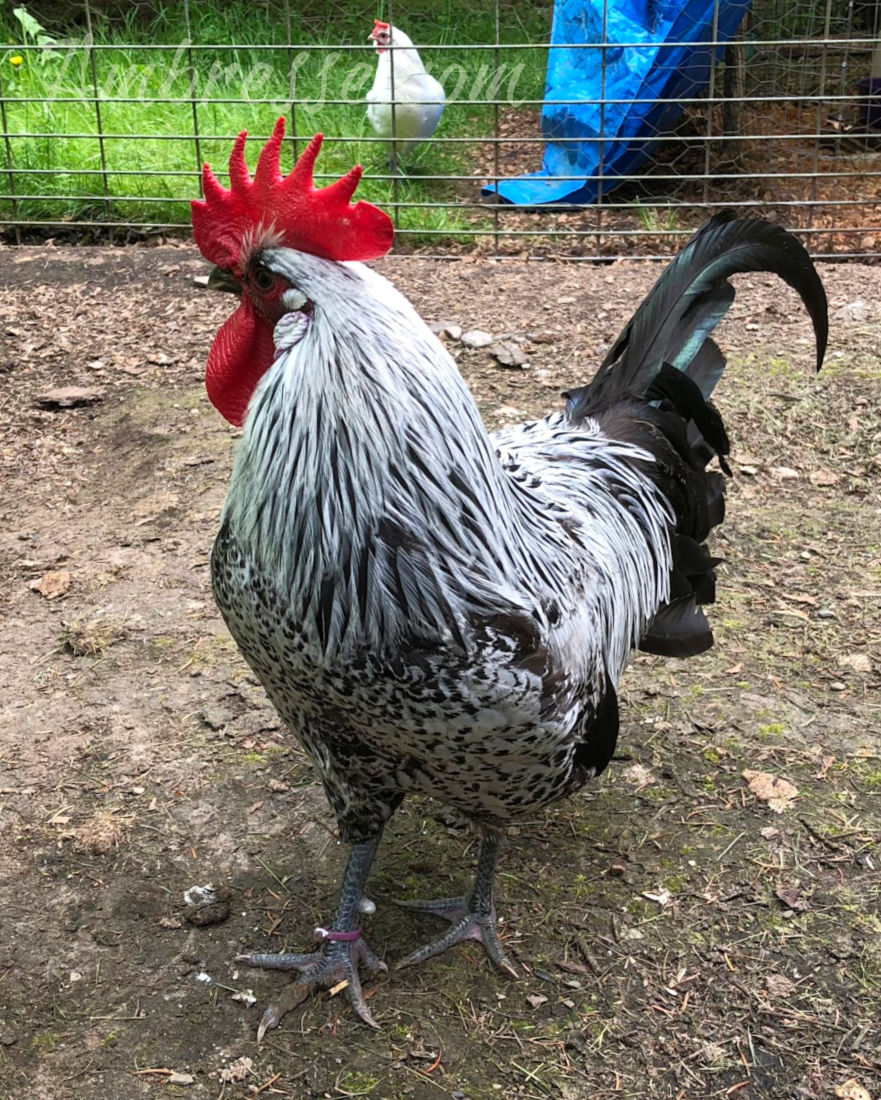American Bresse Genetics Questions
American Bresse Genetics Questions: Several color flaws seem to be relatively common in white American Bresse birds, depending on the source of the birds. Identify these flaws and learn how to eliminate faulty genetics in order to improve your overall flock of American Bresse chickens.
Why the Questions about Color in White (or even Black) American Bresse?
ABCs are still new to North America. Imports of French Bresse (Gauloise) were made to the USA in 2011, 2014, and 2017. Breeders here have had just a feather more than 11 years to breed, cull, select, and otherwise develop and improve the genetics of their growing flocks.
The newness of the American Bresse breed in North America is the main reason for the prevalence of color and other issues in the breed. There hasn't been enough years to identify and weed out the unwanted genetic traits.
The need to refine the genetics of a breed is an ongoing enterprise in ANY breed of chicken, so this is to be expected in American Bresse as well.
The good news is that there are a community of dedicated breeders all tackling their various genetic clean-up projects. Great progress is already being made towards improving and standardizing the American Bresse chicken breed as a whole.
Answers to American Bresse Genetics Questions
New breeders always have legitimate questions about breeding choices until they better understand the underlying genetics, in this case, of the American Bresse breed. Getting good answers is important! You'll see why as you continue reading.
Eyes on the Prize...
As you pursue your breeding program, set your compass and goals with an eye toward the American Bresse Breed Club helmed by Mandelyn Royal.
The Breed Club is the keeper of the draft standard of perfection for the American Bresse breed. And since it is still a draft, it can be considered a living document and subject to refinements as the need or opportunity presents.
FOUR American Bresse Genetics Questions about Color Issues
There are at least FOUR glitches in the matrix of white chicken feathers.
Now that interest in ABCs is soaring, it is time to clarify the problems and the solutions for each of these. I am not a geneticist, so I have reached out to experts who will explain it all for us.
Kerby Jackson is an expert poultry geneticist with 40+ years of study and experience in poultry genetics, including resurrecting extinct varieties of Campine chickens. Mr. Jackson lives in Oregon.
See Kerby Jackson's bio here.
See Kerby Jackson's American Bresse Breeder Listing here.
Nancy Norwood has many years of hands-on experience raising chickens and studying and practicing selective breeding, which requires a very good understanding of chicken genetics. Ms. Norwood lives in Arizona.
See Nancy Norwood's American Bresse Breeder Listing here.
First American Bresse Genetics Question: Black Spots
Black-flecked feathers in all-white birds: This is known as Black Leakage, and is caused by the underlying genetics of a single recessive white gene (see #2 below) paired either with a black gene or a dominant white gene.
Is this good or bad? Does it even matter? Or are black spots actually splash pattern? Geneticist Kerby Jackson explains the chicken color genetics of black leakage here.
Click on the photo at right and view full size to see the little black flecks in the yellow down of these purebred white American Bresse day-old chicks. (Some are still damp after hatching.)
Second American Bresse Genetics Question: Two Types of White Genetics
Dominant White and Recessive White genes: Both of these genes result in solid white feathers, but the two types of white genes "do not mix as well as might be expected" (Hutt 175)1.
The two genes act differently. It is a mistake to introduce recessive white genes into a dominant white flock. The result of this mixture can be color leakage of both black and yellow pigments. It's not pretty. If you then breed the F1 generation, it is very possible to get chicks with full color. These colored chicks will also likely be a bit smaller than the dominant white birds.
To make corrections in the flock's genetic makeup, one ends up having to hunt for the needle, or maybe many needles, in the haystack - to find the source of the errant recessive genes hiding deep in the genetics of that sea of white birds in your pasture or field. It's hard, because ALL the birds are white.
White Genes in American Bresse Chickens gives you Nancy Norwood's understanding and experience, and she brings the photos to illustrate the problem. She'll also show you what to look for in your chicks and in your flock.
Third American Bresse Genetics Question: Yellowing
Yellowing in white feathers. This pervasive trait occurs most often in cockerels but hens can also show yellowing.
Understanding this quirk of genetics requires an understanding of how the actual chemical pigments work in chickens, and the actions of modifying factors that can turn the colors on or off or otherwise change the effect the pigments have on the plumage. Those pigments are called eumelanin - the black pigment, and pheomelanin - the yellow (or red) pigment. Geneticist Kerby Jackson will explain the issue of yellowing.
Fourth American Bresse Genetics Question: Mis-Labeled Phenotypes
Mis-labeling of phenotypes (the appearance of the bird). If a breeder is not familiar with chickens in general, or with certain specific genetics of the American Bresse chicken, she or he may sell you a silver or birchen cockerel, and because it is not solid black, it may be sold as, for example, a splash. And Joe or Jane Customer, having no idea there's a mistaken identity, might believe, possibly for years, that their patterned black cock is a splash.
A LOT of non-solid black American Bresse have been sold as "splash." Hopefully this was done purely out of ignorance.
Here are a few additional American Bresse genetics questions about color patterns and word definitions that the experts will answer for us:
- What is Mottling? Mottling is the word the French use in place of the term splash. The two are the same thing. It is simply a matter of words and language usage.
Mottling = Splash. Nancy Norwood shares the screenshots of a conversation (link coming) she had with the expert breeders in France that clarifies the meaning.
- Mottling and black leakage are NOT the same thing. Splash is NOT black leakage. Once one has seen an actual "splash" cock and hen, it is very clear that the fragments of black leakage, unless it is very severe, could not be considered splash. Trouble is, there's money that might be made by selling birds with leakage and calling them splash. I am sorry if this has happened to you. Nancy Norwood, our experienced chicken breeder, will discuss splash and black leakage here (link coming).
- Silver pattern is NOT splash. This, and birchen, are other patterns that have been misrepresented as splash. For example, my very first American Bresse purchase was of a mix of day-olds containing White, Black, Blue, and Splash. A couple of the blacks turned out to be birchen patterned and not splash at all.
***A little tip for those who love birchen and/or silver patterns: The genetics for these patterns are widely represented in the colored varieties, and therefore they are popping up in many flocks. They are beautiful, and very popular.
If you love them, breed them! Because, there is an excellent possibility that a patterned variety will find room in the final draft of the American Bresse Standard of Perfection.
Thankfully you now understand the genetics a bit better, and will be able to recognize on sight the yellowing, the black leakage, the splash, and the silver or birchen patterns!
Thanks for joining us on the exciting journey of breeding and improving the American Bresse breed! I hope that your American Bresse Genetics questions will be well answered. Please feel free to reach out to us if you have additional questions unanswered by the Genetics section of the Ambresse website.
- Home
- ABC Genetics Questions
Resources:
- Genetics of the Fowl: The Classic Guide to Poultry Breeding and Chicken Genetics, by F. B. Hutt, Norton Creek Press.
Overheard...
"I processed my first batch of Bresse... Today I roasted one according (somewhat) to the recipe posted on Ambresse. It was delicious! Tender, moist and succulent... So happy I chose this breed! (B.E., MN, 12/11/2024).
"Your site has the first accurate information about American Bresse chickens that I have seen in English. Thanks for your diligent work" (L. Wooton, NC, 12/17/2024).
Translate This Page
Traduire Cette Page
Traduzca Esta Pagina

News
American Bresse Breed Club web pages can be found under the Breed Club tab on the navigation bar. Any changes in Club status will be posted here!
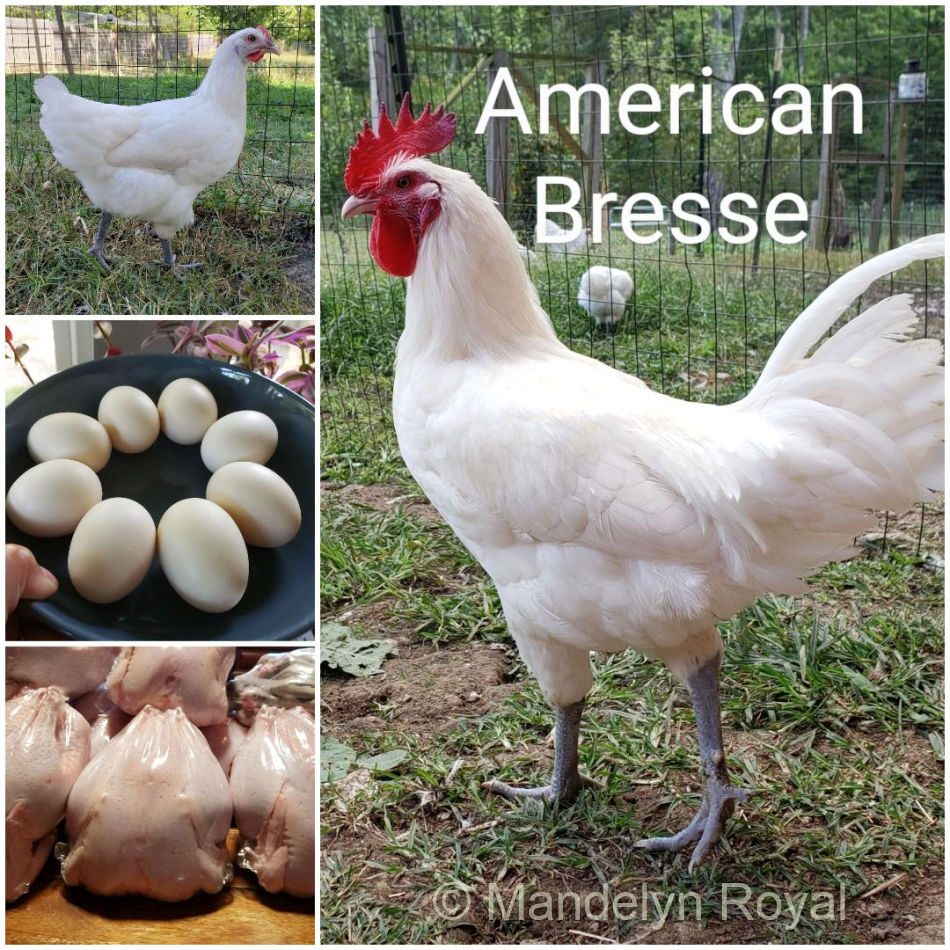
Photo credit: Mandelyn Royal.
